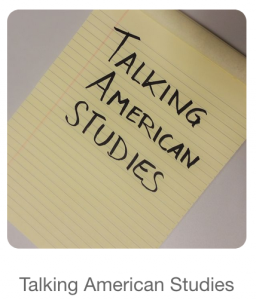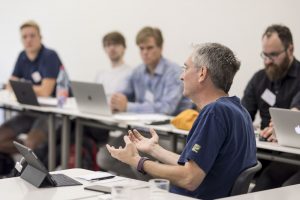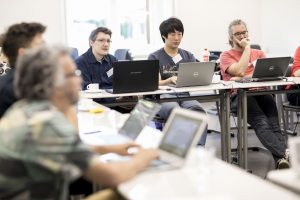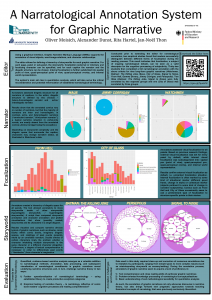We are giving two presentations at the European Society of Cognitive Psychology (ESCoP) in beautiful Tenerife. Jochen Laubrock, Jinger Pan and Ming Yan use gaze-contingent parafoveal fast-priming to show that parafoveal preview is not always beneficial, but can also incur a cost given enough time for preview processing. David Dubray and Jochen Laubrock summarize their work on illustrator classification and semantic segmentation of comics using deep convolutional neural networks, based on the Graphic Narrative Corpus. See you on Sep 28th!
General
Two Papers Accepted for ICDAR 2019
Two papers have been accepted for this year’s International Conference on Document Image Analysis (ICDAR) and the accompanying GREC workshop on Graphics Image Recognition in Sydney. We will present recent work in which we trained deep fully convolutional neural networks for image segmentation on the Graphic Narrative corpus. David Dubray and Jochen Laubrock present a paper on speech balloon detection and segmentation in comics, which Jochen Laubrock and David Dubray extend to multi-class semantic segmentation.
Two Papers Accepted for DH 2019 in Utrecht
The yearly DH conference will be taking place in Utrecht, the Netherlands, this year, and we’re happy to report that we’ll be participating with two papers. There were a total 891 (!) proposals, apparently, with an acceptance rate of 42 per cent. Alexander Dunst & Rita Hartel will be talking about “Quantifying Complexity in Multimodal Media: Alan Moore and the ‘Density’ of the Graphic Novel”. Rita and Oliver Moisich will also be presenting a poster on our editor software, which is available for download in a new version and with new features here. See you in Utrecht!
New preprint on CNN-based speech balloon detection available
David Dubray and Jochen Laubrock just published a preprint on automatic speech balloon detection and segmentation using deep CNNs, https://arxiv.org/abs/1902.08137. The fully convolutional model, trained on our GNC annotations, achieves state-of-the-art performance on the GNC as well as the eBDtheque data sets. Such semantic segmentation of images is an interesting problem in computer vision and document analysis. Speech balloon (and caption) segmentation can also be considered an important step in building an OCR pipeline for analyzing text in graphic novels.
Podcast-Interview about the Digital Humanities in Germany

Here’s another pre-holidays piece of news: In the first episode of a new podcast on American Studies, appropriately titled “Talking American Studies”, Alexander Dunst talks to Dennis Mischke and host Verena Adamik (both from the University of Potsdam) about the DH scene in Germany and an upcoming special issue of the journal Amerikastudien, titled Digital Scholarship in American Studies. You can listen to the episode here. Many thanks to Verena for making this possible!
Three Papers Accepted for DHd 2019 Conference
It’s been a hectic few weeks writing and reviewing abstracts for the DH and DHd conferences next year, but we’re happy to report that our first batch of papers has been accepted. Here’s what we’ll present at DHd 2019 in Frankfurt and Mainz, which will take place from 25-29 March:
1. Alexander Dunst & Rita Hartel: “Herausforderungen und
Potenzial kombinatorischer Bild- und Textanalysen am Beispiel Comics”
2. Jochen Laubrock & David Dubray: “Grundzüge einer visuellen Stilometrie”
3. Oliver Moisich & Rita Hartel: Multimedia Markup Editor (M3): Semi-Automatische Annotationssoftware für statische Bild-Text Medien (Poster).
Hope to see you there, and happy holidays from the Hybrid Narrativity research group!
Poster for IGEL-Conference 2018
Pre-Print Papers Available for MANPU 2019
For anyone interested to know what we’ve been up to over the summer, our contributions to the upcoming “3rd International Workshop on Comics Analysis, Processing and Understanding” (somehow, short: MANPU) are now available in a handy pre-print format. The workshop will take place as part of the Multimedia Modeling (MMM) conference in Thessaloniki, Greece, from 8-11 January.
Here are the links to Alex and Rita’s “‘How good is good enough?’: Establishing Quality Thresholds for the Automatic Text Analysis of Retro-Digitized Comics” and Jochen and David’s “CNN-Based Classification of Illustrator Style in Graphic Novels: Which Features Contribute Most“.
Some Impressions from our Potsdam comics annotation workshop

Fotograf: www.friese.tv
Andreas Friese

Fotograf: www.friese.tv
Andreas Friese

Fotograf: www.friese.tv
Andreas Friese

Fotograf: www.friese.tv
Andreas Friese
Out Now: “Empirical Comics Research: Digital, Multimodal, and Cognitive Methods”
We’re happy to report that our co-edited volume on Empirical Comics Research has now been published. You can read the introduction here and find more information about the book (or even better: buy it) on the publisher’s homepage or on Amazon.

